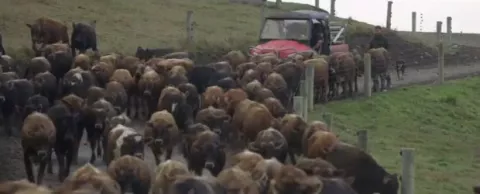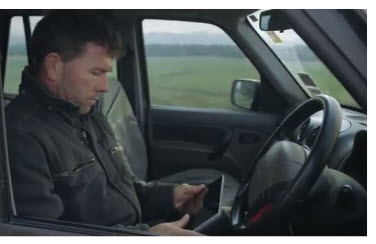
During a conference in Rome last month, the UN's Food and Agriculture Organization (FAO) revealed after years of progress, world hunger has increased. In fact, FAO’s Director-General Jose Graziano da Silva said the world is facing the worst food crisis since World War II. This is happening, he added, less than two years after we agreed to eradicate hunger by 2030. I mention this to underscore the importance of technology in helping solve world hunger and how that affects not just areas where conflict and climate change have taken a toll, but anywhere that people are under-nourished. – Philip Bane
Not only does the booming agtech sector offer potential solutions to the world food crisis with better crop yields, lower water and energy consumption, more locally sourced fresh foods and the like. But it also offers a fascinating glimpse into a revolution that is transforming a commodity every person on earth depends on.
Here are just a few examples.
Mobile, cloud-based farm management
Blackhills Farm on New Zealand’s Canterbury Plains is using a mobile, cloud-based water management and irrigation system that leverages sensor technology and software from Schneider Electric, built on a Microsoft Azure IoT platform. Developed by WaterForce, a New Zealand irrigation and water management company, the remote SCADAfarm system helps farmer Craig Blackburn not only save time, but use less water and electricity, reduce costs and increase yields.

Bill Gates researches digital ag in the outback
A remote cattle farm in Queensland, meanwhile, had a recent visit from Microsoft co-founder Bill Gates, who was doing research on digital agriculture for the Bill and Melinda Gates Foundation. According to The Australian, Gates was interested in how innovative cattle raising techniques used in the outback might revolutionize beef production in Africa and other low-income countries.
IoT farming indoors and out
Data-powered agronomy is what Israeli digital ag startup Prospera uses to help farms grow healthier, higher quality crops. Starting mainly with greenhouse customers, today Prospera’s end-to-end IoT platform supports both indoor and outdoor farms. As Agfundernews.com explains it, Prospera “uses computer vision, machine learning and data science to detect and identify diseases, nutrient deficiencies, and other types of crop stress on farms with the hope of improving crop yields and saving farmer costs.”
The firm recently raised a $15 million Series B round, led by the venture arms of Qualcomm and Cisco.
“We have seen the agtech sector grow significantly in recent years as innovations in drone, satellite mapping, AI and IoT have greatly enhanced the ability to improve crop yield and positively impact overall farm management,” Boaz Peer of Qualcomm Ventures told Agfunder. “The primary drivers contributing to this growth include the affordability of sensors, wireless connectivity and machine learning processing, both at the edge of the network and in the cloud. We believe the convergence of all of these elements is driving this trend and will positively impact the agtech sector, bringing forth greater efficiencies and improved ROI.”
Empowering all farmers
Smallholder farms are the foundation of food security in Asia, Paul Teng writes in Singapore’s Today. But because they are geographically spread out and working under diverse farming situations, it’s been a challenge to get them to embrace agtech tools available to them, Teng says.
Given urgent concerns about meeting the world’s food needs in the years ahead, suggests Teng, “it is all the more important not only to ensure smallholders have access to farming inputs, but also that they know how to use the inputs effectively.”
The advent of information and communications technologies in ag not only democratizes farming, Teng adds, it also has the prospect of attracting millennials to agriculture in an era when farm populations are aging and declining.
More on this topic:
Panasonic -- taking food security indoors in Singapore
How cloud technology is helping bring indoor farming to inner cities
#CCEOS#



